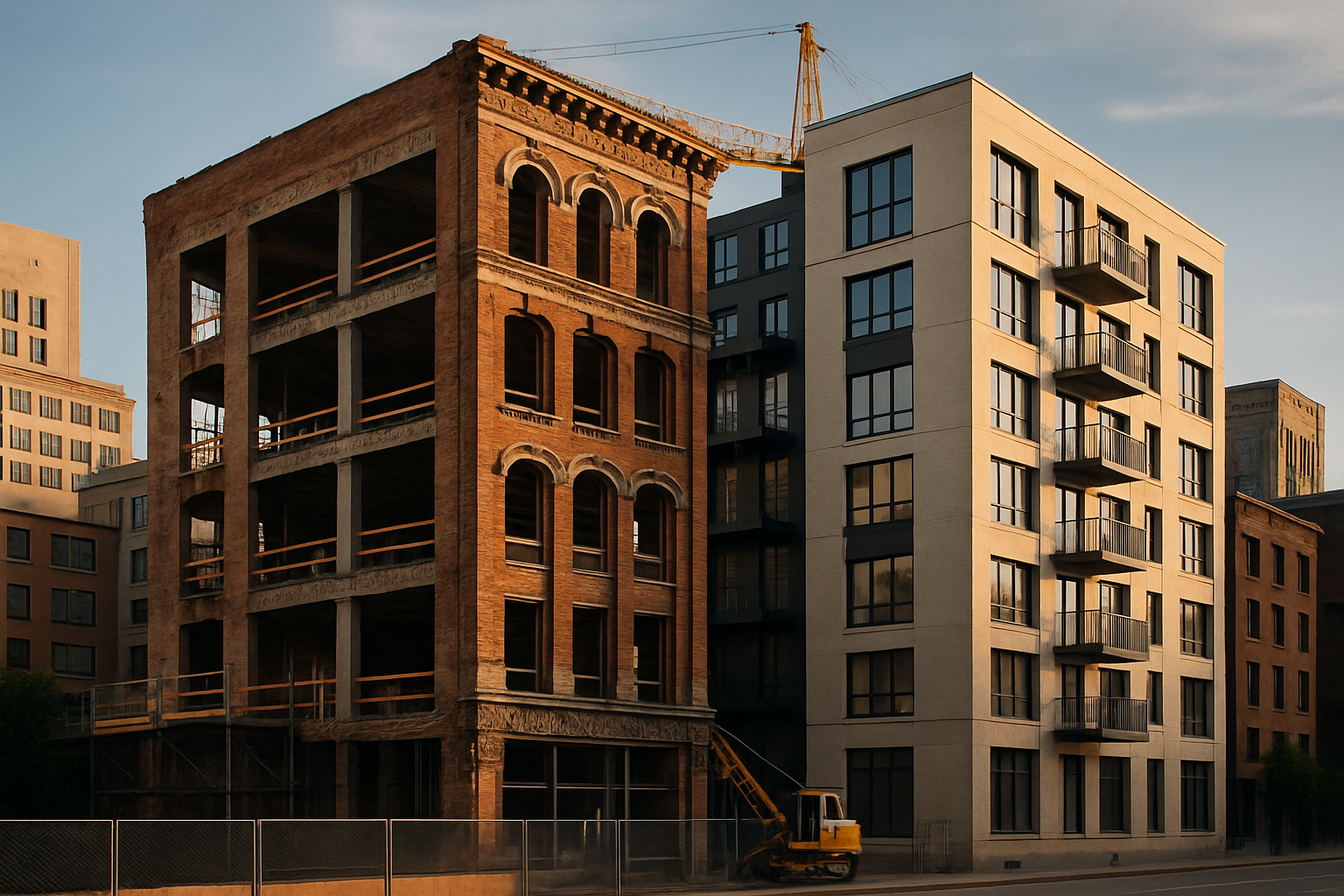Unlocking Hidden Value: The Rise of Adaptive Reuse in Real Estate
In an era of urban redevelopment and sustainability, adaptive reuse has emerged as a transformative strategy in real estate. This innovative approach breathes new life into obsolete structures, turning abandoned factories into trendy lofts, outdated offices into vibrant community spaces, and forgotten landmarks into thriving mixed-use developments. As cities grapple with housing shortages and environmental concerns, adaptive reuse offers a compelling solution that marries preservation with progress.

Historical Context and Evolution
The roots of adaptive reuse can be traced back to the 1960s and 1970s when preservationists began advocating for the protection of historic buildings. Initially focused on saving architectural landmarks, the movement evolved to encompass a broader range of structures. The 1990s saw a surge in adaptive reuse projects as cities sought to revitalize declining downtown areas. Today, it has become a cornerstone of sustainable urban development, aligning with global efforts to reduce carbon footprints and preserve cultural heritage.
Economic Benefits and Market Trends
Adaptive reuse projects often present significant economic advantages over new construction. By utilizing existing structures, developers can potentially save on material costs, reduce construction time, and benefit from location advantages of established neighborhoods. A 2021 study by the National Trust for Historic Preservation found that adaptive reuse projects can be up to 16% less expensive than new construction in major U.S. cities. Moreover, these projects often qualify for tax incentives and grants, further enhancing their financial viability.
Challenges and Considerations
While adaptive reuse offers numerous benefits, it also presents unique challenges. Older buildings may require extensive renovations to meet modern building codes and energy efficiency standards. Asbestos removal, structural reinforcement, and accessibility upgrades can significantly impact project budgets. Additionally, navigating complex zoning regulations and preservation requirements can be time-consuming and costly. Successful adaptive reuse projects demand a delicate balance between preserving historical elements and incorporating modern amenities.
Impact on Urban Planning and Community Development
Adaptive reuse plays a crucial role in urban revitalization efforts. By repurposing vacant or underutilized properties, cities can combat urban sprawl, preserve neighborhood character, and promote sustainable development. These projects often serve as catalysts for broader community renewal, attracting new businesses, residents, and investment to previously neglected areas. A prime example is the High Line in New York City, where an abandoned elevated railway was transformed into a public park, sparking widespread redevelopment in the surrounding neighborhoods.
Innovative Approaches and Case Studies
Across the globe, developers and architects are pushing the boundaries of adaptive reuse. In Rotterdam, the iconic Fenix warehouses have been transformed into a mixed-use development featuring apartments, offices, and cultural spaces. The project seamlessly blends historic industrial architecture with modern design, creating a unique urban ecosystem. In Detroit, the former Michigan Central Station is undergoing a massive renovation to become a hub for mobility innovation, symbolizing the city’s resurgence and adaptability.
The Role of Technology in Adaptive Reuse
Advancements in technology are revolutionizing adaptive reuse projects. 3D scanning and Building Information Modeling (BIM) allow developers to create detailed digital models of existing structures, facilitating more accurate planning and cost estimation. Virtual and augmented reality tools enable stakeholders to visualize potential designs and make informed decisions. Moreover, innovative construction techniques and materials are making it possible to retrofit old buildings with cutting-edge sustainable features, enhancing energy efficiency and occupant comfort.
Future Trends and Opportunities
As urban populations continue to grow and sustainability remains a top priority, adaptive reuse is poised for significant expansion. Experts predict a surge in the conversion of retail spaces into residential or mixed-use developments, driven by the changing landscape of brick-and-mortar retail. The COVID-19 pandemic has also accelerated the transformation of office buildings into residential or hybrid spaces, reflecting evolving work patterns. Additionally, there’s growing interest in adapting industrial sites for urban agriculture and renewable energy production, further diversifying the adaptive reuse landscape.
A Sustainable Path Forward
Adaptive reuse represents a powerful tool for addressing urban challenges while preserving architectural heritage. As cities evolve, this approach offers a sustainable alternative to demolition and new construction, reducing waste, conserving resources, and maintaining the cultural fabric of communities. For real estate investors, developers, and policymakers, adaptive reuse presents exciting opportunities to create value, drive innovation, and shape the cities of tomorrow. By reimagining the potential of existing structures, we can build a more sustainable and vibrant urban future.





